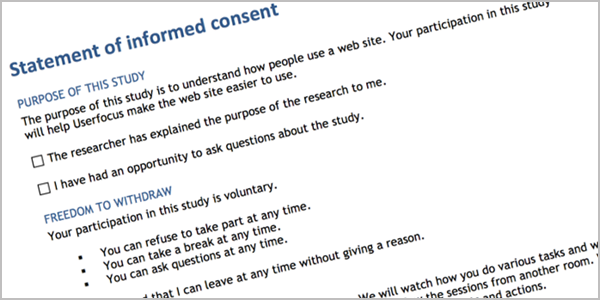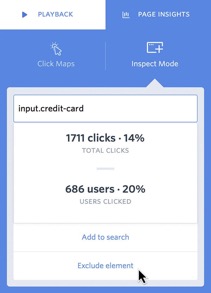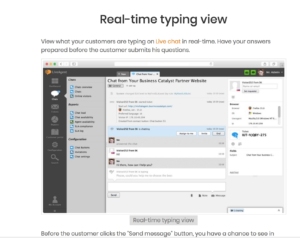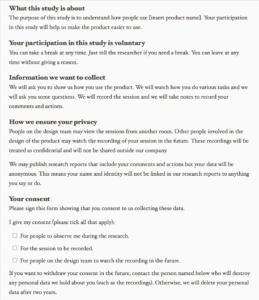Data privacy is a real concern and often, our data isn’t secure. Giant corporations like Facebook and Equifax are in the news for breaching the privacy of millions. Social security numbers, home addresses but also page likes, and page views are hacked, sold or leaked. As more of our lives are spent on the internet, it’s important to consider what is consensual and what is crossing the line in digital design and research. By implementing the model of informed consent, explained further below, Researchers can remove potential for misinformation, vulnerabilities and manipulation. Designers and Researchers may not personally oversee the security of user data but practicing consentual data collection from the start is an important component to ethical best practices in usability research.
There are many platforms that can access user’s interactions with a website as these platforms provide user tracking tools like heatmaps, click collection, and frequency of page visits to name a few. Popular examples of platforms used to collect and track user data are Google analytics, Usertesting.com, Octo.ai, Kuku Analytics and FullStory. More unexpectedly are some sites ability to track a user’s interstitials. Interstitials are most commonly recognized as those (often frustrating) pop-ups that appear when in the midst of completing another action and waiting for your intended content to load but they can also be a fun animation that plays while a page is loading or a helpful signifier.
Ex.1: Click tracker
Ex. 2: Typing tracker
Fun animations and pop-ups aside, interstitials essentially describe the abstract amount of time users take between interactions. Designer, Quinn Yeast, describes observing interstitials as peering into a user’s “mental space,” and therefore, can easily cross a boundary. Yeast uses the example of an online customer service chat to portray interstitials. He describes how what is typed into the text box prior to sending could be visible to the representative and that is, in a way, a breach of privacy. It’s impossible to say if everyone would feel similarly should their interstitials be tracked but it is important to make sure this approach is weighed in relation to other approaches. And, if researchers opt to employ this kind of tracking, inform their users appropriately of what is under the microscope. Different types of research carry with them different nuances and it’s important to consider the implications of each of them before conducting a study.
These considerations go hand in hand with informed consent. Informed consent is when a person grants permission after being fully informed of, and knowledgeable of, the possible consequences and outcomes associated with the action they are taking part in. Researchers and Usability Experts obtain informed consent by providing the study participant(s) with a Consent Form. Unlike legal waivers which benefit the entity that creates them, consent forms benefit the participant and are meant to protect their well-being.
Establishing best practices for online interaction research, Researchers, Friedman, Feltman and Millet created the six-step model of informed consent in 2000, listed below. (2)
- Disclosure – What information will be collected, who will collect it, how long it will be stored, what purpose it serves and in what ways the participant’s identity will be protected.
- Comprehension – This asks if the participant fully understands what has been disclosed. Comprehension is difficult to prove but two popular approaches are: restating in what has just been disclosed using other words and applying what has been disclosed to hypothetical situations for clarity, e.g.: Will the participant’s past selections/purchases/comments be visible to future system users.
- Voluntariness – implies that participation was not manipulated or coerced and the participant can withdraw participation at any time.
- Competence – recognizes whether the participant has the capacity to perform certain functions. Whether it’s emotional, mental or physical, it’s important to gauge if the test audience or individual is appropriate for certain tasks and permissions. For example: children 12 years old and under require written parental/guardian consent forms per the U.S. Children’s Online Privacy Protection Action (COPPA) should a site want to collect their data. (2)
- Agreement – Asks if the ability to consent or decline is clearly visible and whether it is ongoing or not.
- Minimal Distraction – Asks if requesting consent is presented without distracting too much from the task or study at hand. This step is also difficult to gauge as the act of obtaining consent is essentially a distraction in itself but mandatory nonetheless.
Ex.3 – Thorough Consent Form
Researchers can reference this six step model to practice sound and thorough methods when obtaining consent. Certain methods, like interstitial tracking described earlier, are more complex and have the potential to expose participants to unexpected vulnerabilities. Building trust with users begins before the research does. Maintaining transparency and diligent consent practices yields ethical and valid research results.
References:
- Thoughts on consent & ethics in tracking user behaviour for UX Research by Quinn Yeast
- Informed Consent by Design by Batya Friedman, Jessica Miller and Peyina Lin
- Anatomy of a Consent Form by David Travis



